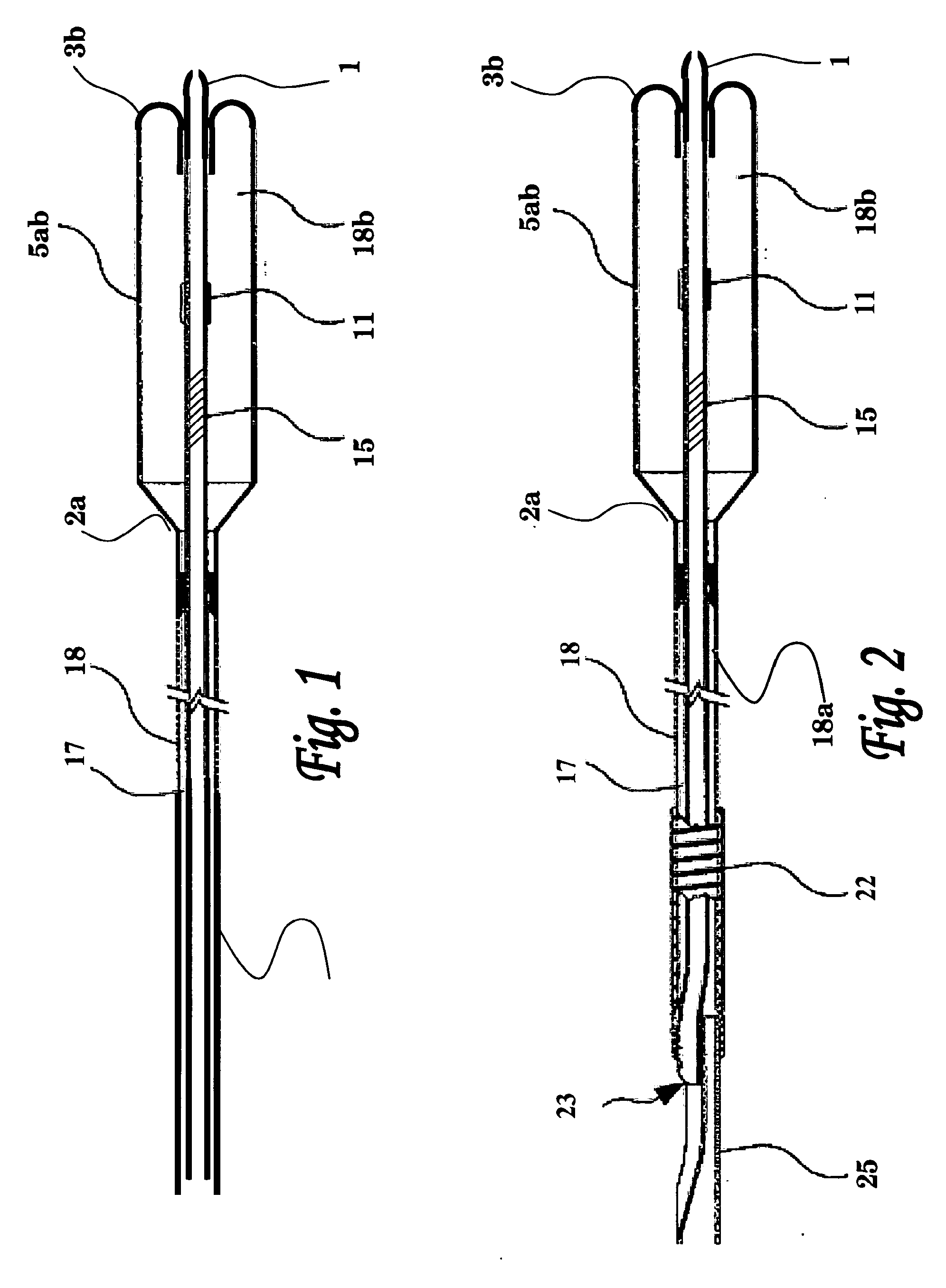Balloon catheter system for treating vascular occlusions
a balloon catheter and vascular occlusion technology, applied in balloon catheters, stents, dilators, etc., can solve the problems of higher equipment costs, lower success rates, and higher restraint rates
- Summary
- Abstract
- Description
- Claims
- Application Information
AI Technical Summary
Benefits of technology
Problems solved by technology
Method used
Image
Examples
first main embodiment
Balloon Catheter Having Oscillating Catheter Shaft Distal Tip
[0106]FIG. 1 schematically illustrates an over the wire implementation of the balloon catheter of the invention. This balloon catheter implementation comprises an outer shaft 18, inner shaft 17 passing thereinside, and a balloon 5ab. The lumen of inner shaft 17 may be used for passing a guide wire thereinside, which may be introduced via its proximal opening (e.g., 12 in FIGS. 7A-7F). In the pre-charged embodiment shown in this figure, balloon 5ab has a conical proximal end 2a which tapers proximally towards its annular attachment area on the outer surface of the distal end portion of outer shaft 18, and a rounded distal end 3b which is obtained by folding the distal end of balloon 5ab proximally inwardly and by attaching the outer surface of its distal end portion to an annular attachment area on the outer surface of the distal end portion of inner shaft 17. Other types of balloon attachment (resulting in either pre-charg...
second main embodiment
Balloon Catheter Having Oscillating Guide Wire Immobilized within Catheter Shaft
[0145]In this second main embodiment of the invention, the balloon catheter system comprises a guidewire (also referred to herein as a ramming tool) immobilized within an inner catheter shaft lumen, wherein the balloon catheter is capable of delivering rapid motion to the guidewire passing therein. The in vivo application of such rapid motion to, or adjacent to, an occlusion formed in a body organ or pathway is effectively utilized for fracturing the occluding matter and for perforating a passage thereinside, that may allow crossing and / or removing the occluding matter.
[0146]The balloon catheter of the invention is preferably constructed from concentric tubes having an inflatable member, such as a balloon, attached to their distal ends. The inflatable member can be a sleeve having tapering ends that can be sealably attached to the distal end portions of the inner and outer tubes of the catheter device, s...
PUM
 Login to View More
Login to View More Abstract
Description
Claims
Application Information
 Login to View More
Login to View More - R&D
- Intellectual Property
- Life Sciences
- Materials
- Tech Scout
- Unparalleled Data Quality
- Higher Quality Content
- 60% Fewer Hallucinations
Browse by: Latest US Patents, China's latest patents, Technical Efficacy Thesaurus, Application Domain, Technology Topic, Popular Technical Reports.
© 2025 PatSnap. All rights reserved.Legal|Privacy policy|Modern Slavery Act Transparency Statement|Sitemap|About US| Contact US: help@patsnap.com



